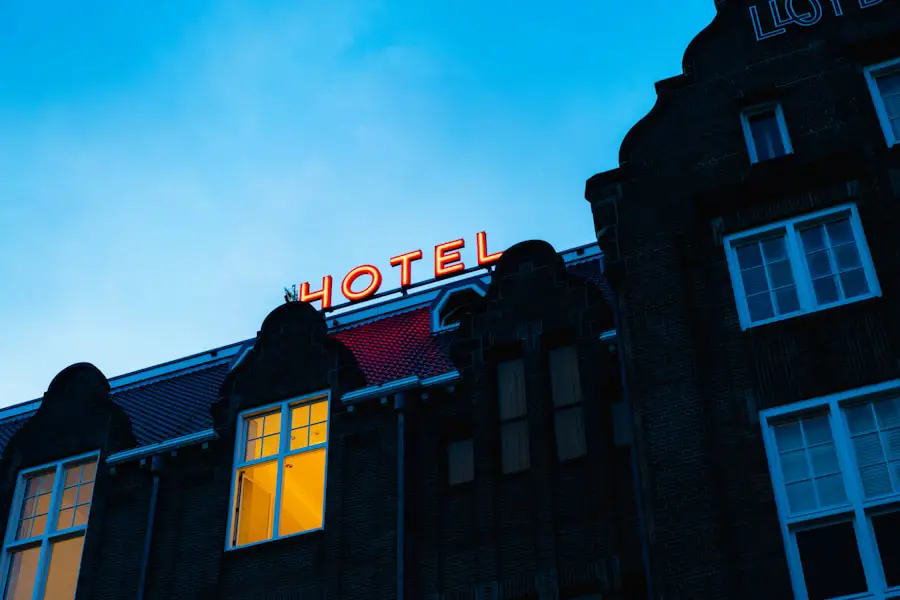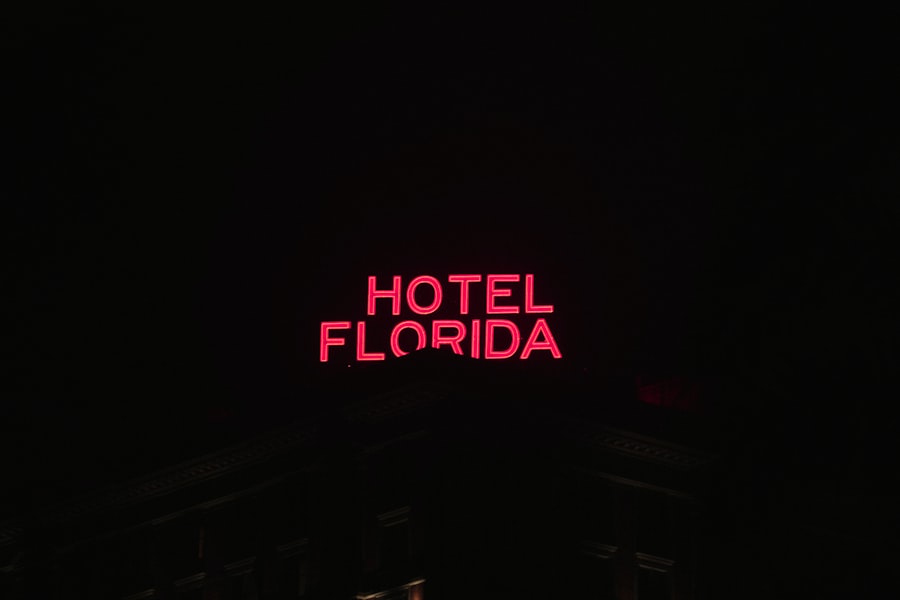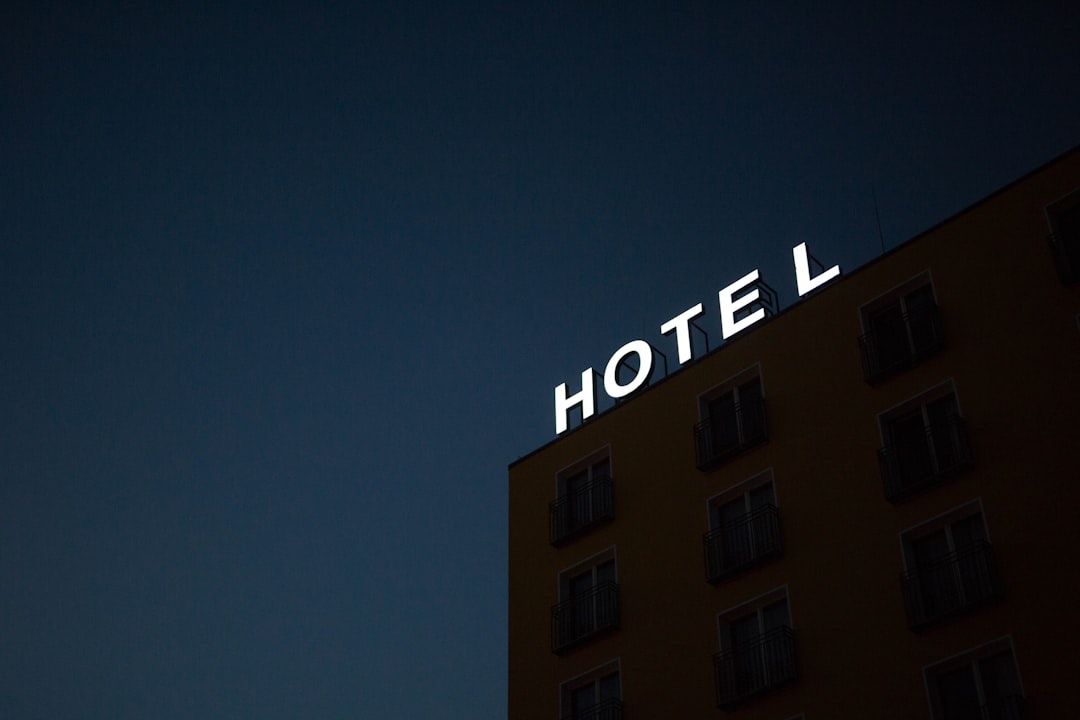Stephen King’s “The Shining” has transcended its origins as a horror novel to become a cultural phenomenon, largely due to Stanley Kubrick’s iconic film adaptation released in 1980. Central to the story is the Overlook Hotel, a sprawling, isolated resort that serves as the backdrop for the psychological unraveling of its caretaker, Jack Torrance, and his family. The hotel itself is almost a character in its own right, embodying the themes of isolation, madness, and the supernatural.
While the Overlook Hotel exists only in the realm of fiction, its portrayal has sparked interest in real-life locations that inspired or were used in the film. This article delves into the various locations associated with “The Shining,” exploring how they contribute to the film’s eerie atmosphere and enduring legacy. The allure of the Overlook Hotel lies not only in its haunting beauty but also in its complex history and the chilling events that unfold within its walls.
The film’s cinematography, combined with Jack Nicholson’s unforgettable performance, creates an unsettling ambiance that lingers long after the credits roll. As fans of the film seek to connect with its haunting narrative, they often turn to real-world locations that echo the fictional hotel’s grandeur and terror. This exploration will take us through the various sites that played a role in bringing “The Shining” to life, revealing how these places have become intertwined with the film’s legacy.
The Overlook Hotel is a masterful creation of Stephen King’s imagination, designed to evoke feelings of dread and isolation. In the novel, it is situated in the Colorado Rockies, surrounded by vast wilderness and snow-capped mountains. The hotel is described as having a rich history filled with tragic events, including murders and hauntings, which contribute to its sinister reputation.
Kubrick’s adaptation amplifies these themes through striking visuals and a haunting score, making the Overlook an unforgettable setting for horror. In contrast to its fictional counterpart, there are real hotels that have inspired or served as filming locations for “The Shining.” The Timberline Lodge in Oregon is often cited as a primary influence on the exterior design of the Overlook Hotel. Its rustic architecture and stunning mountain backdrop closely resemble King’s vision of an isolated resort.
However, while Timberline Lodge captures the essence of the Overlook’s exterior, it lacks the dark history that permeates King’s narrative. This juxtaposition between fiction and reality highlights how filmmakers can draw inspiration from real places while crafting their own unique stories.
Key Takeaways
- The Shining Hotel, also known as The Overlook Hotel, is a key location in the iconic horror film “The Shining” directed by Stanley Kubrick.
- The Overlook Hotel is a fictional location based on the real-life Timberline Lodge in Oregon, which was used for exterior filming.
- The interior of The Overlook Hotel was filmed at The Ahwahnee Hotel in Yosemite National Park, California, adding to the film’s eerie atmosphere.
- The iconic hedge maze in “The Shining” was a real addition to the Timberline Lodge, becoming a popular tourist attraction for fans of the film.
- Room 237, a mysterious and pivotal location in the film, was actually filmed at the Timberline Lodge, adding to the hotel’s mystique.
The Timberline Lodge: Exterior Filming Location
Timberline Lodge, located on Mount Hood in Oregon, served as the primary exterior filming location for “The Shining.” Built during the Great Depression as part of a Works Progress Administration project, this lodge boasts a distinctive blend of rustic charm and breathtaking views. Its imposing structure, with wooden beams and stonework, provides an authentic mountain lodge aesthetic that perfectly aligns with King’s vision of the Overlook Hotel. The lodge’s dramatic setting is accentuated by its proximity to snow-capped peaks and dense forests, creating an atmosphere of isolation that is crucial to the film’s narrative.
During filming, Kubrick took advantage of Timberline Lodge’s stunning vistas, capturing sweeping shots that emphasize the characters’ seclusion. The lodge itself has become a pilgrimage site for fans of “The Shining,” who come to experience the same breathtaking views that Jack Torrance gazed upon during his descent into madness. Visitors can explore the lodge’s interior and exterior, taking in its historical significance while immersing themselves in the eerie ambiance that permeates the film.
The Ahwahnee Hotel: Interior Filming Location

While Timberline Lodge provided the exterior shots for “The Shining,” the interior scenes were filmed at The Ahwahnee Hotel in Yosemite National Park, California. This luxurious hotel is renowned for its stunning architecture and opulent interiors, which stand in stark contrast to the dark themes explored in Kubrick’s film. The Ahwahnee features grand ballrooms, intricate woodwork, and expansive windows that frame breathtaking views of the surrounding landscape.
Kubrick’s choice of The Ahwahnee for interior filming was deliberate; he sought a location that would convey both elegance and an underlying sense of foreboding. The hotel’s lavish decor serves as a backdrop for some of the film’s most iconic scenes, including Jack’s encounters with ghostly apparitions and his descent into madness. The juxtaposition of beauty and horror is palpable within these walls, enhancing the film’s psychological tension.
Today, visitors to The Ahwahnee can explore its luxurious spaces while reflecting on their connection to one of cinema’s most chilling narratives.
The Hedge Maze: A Real Addition to the Hotel
| Aspect | Metric |
|---|---|
| Size | 10,000 square feet |
| Number of Paths | 5 |
| Number of Dead Ends | 8 |
| Number of Hedges | Over 1,000 |
| Completion Time | 30 minutes to 1 hour |
One of the most memorable elements of “The Shining” is the hedge maze that plays a pivotal role in Jack Torrance’s unraveling. While this maze was a product of Kubrick’s imagination, it has since become an iconic symbol associated with the film. In reality, there is no hedge maze at either Timberline Lodge or The Ahwahnee; however, Kubrick created a stunning visual representation through meticulous set design.
The hedge maze serves as a metaphor for Jack’s mental state—confusion, entrapment, and ultimately, his descent into madness. Its winding paths and towering hedges create a sense of claustrophobia that mirrors Jack’s psychological turmoil. In recent years, some fans have sought to recreate this iconic maze experience at various locations inspired by “The Shining.” These mazes often feature intricate designs that pay homage to Kubrick’s vision while allowing visitors to engage with the film’s themes in a tangible way.
The Room 237 Mystery: Exploring the Real Location
Room 237 is perhaps one of the most infamous elements associated with “The Shining.” In the film, it serves as a site of terror and supernatural occurrences, where Jack encounters ghostly figures and experiences disturbing visions. While Room 237 has become synonymous with horror lore, it does not exist in real life at either Timberline Lodge or The Ahwahnee Hotel. In reality, Room 237 was created for cinematic purposes; however, it has sparked countless theories and discussions among fans regarding its significance within the narrative.
Some interpretations suggest that Room 237 symbolizes Jack’s repressed desires or his connection to past traumas. This ambiguity adds layers to the film’s psychological complexity and invites viewers to explore their interpretations of what lies behind closed doors.
The Elevator of Blood: Where it was Filmed

One of the most iconic scenes in “The Shining” involves an elevator filled with blood—a striking visual that has become emblematic of horror cinema. This scene was filmed on a soundstage rather than at any specific hotel location. Kubrick utilized practical effects and innovative cinematography techniques to create this chilling moment that has left an indelible mark on audiences.
The elevator scene serves as a powerful representation of the hotel’s dark history and its impact on those who inhabit it. The blood symbolizes not only violence but also the weight of past traumas that haunt Jack Torrance and his family. By crafting such vivid imagery through meticulous set design and special effects, Kubrick elevated horror filmmaking to new heights, influencing countless filmmakers who followed in his footsteps.
Exploring the Colorado Lounge: Real Life Location
The Colorado Lounge is another significant location within “The Shining,” serving as a gathering place for Jack Torrance and his family during their time at the Overlook Hotel. This space is characterized by its grand fireplace and expansive windows that offer stunning views of the surrounding landscape. While this lounge does not exist in real life as depicted in the film, it draws inspiration from various lodge designs.
In reality, many hotels feature lounges that evoke similar atmospheres—spaces where guests can relax by a fire while enjoying breathtaking views of nature. These lounges often serve as social hubs within hotels, fostering connections among guests much like they do for Jack’s family in “The Shining.” Fans visiting Timberline Lodge or The Ahwahnee can find their own versions of these inviting spaces while reflecting on their connection to Kubrick’s cinematic masterpiece.
The Shining Hotel Today: A Tourist Attraction
Today, both Timberline Lodge and The Ahwahnee Hotel have become popular tourist destinations for fans of “The Shining.” Visitors flock to these locations not only to appreciate their architectural beauty but also to immerse themselves in the eerie atmosphere that inspired one of horror cinema’s greatest films. Guided tours often highlight key filming locations and provide insights into how Kubrick brought King’s vision to life. At Timberline Lodge, guests can explore various areas used during filming while enjoying outdoor activities such as skiing or hiking in the surrounding wilderness.
Meanwhile, The Ahwahnee offers luxurious accommodations and fine dining experiences amidst stunning natural beauty. Both locations have embraced their connection to “The Shining,” hosting events and themed activities that celebrate their cinematic history.
Behind the Scenes: Stories from the Filming Locations
Behind-the-scenes stories from the filming of “The Shining” reveal fascinating insights into Kubrick’s creative process and his interactions with cast and crew. For instance, during production at Timberline Lodge, snowstorms frequently disrupted filming schedules, forcing Kubrick to adapt his plans on short notice. These challenges contributed to an atmosphere of tension on set—an experience mirrored by Jack Torrance’s own struggles within the narrative.
Additionally, actors recount their experiences working under Kubrick’s meticulous direction. Shelley Duvall’s portrayal of Wendy Torrance was particularly challenging; she faced intense pressure from Kubrick to deliver emotionally charged performances. This dedication resulted in some of cinema’s most memorable moments but also took a toll on her well-being during production.
The Legacy of The Shining Hotel
The legacy of “The Shining” endures through its powerful storytelling and haunting visuals that continue to captivate audiences decades after its release. The real-life locations associated with this cinematic masterpiece—Timberline Lodge and The Ahwahnee Hotel—serve as tangible connections to a fictional world steeped in horror and psychological complexity. As fans explore these sites today, they engage with both history and art while reflecting on their own interpretations of fear and madness.
Through its exploration of isolation, trauma, and supernatural elements, “The Shining” remains relevant in contemporary discussions about horror cinema. Its influence can be seen across various media forms—from literature to television—demonstrating how powerful storytelling can transcend time and space. As visitors continue to flock to these iconic locations inspired by King’s vision and Kubrick’s artistry, they contribute to an ongoing dialogue about what makes us afraid—and why we are drawn to those fears.
If you are a fan of “The Shining” and interested in visiting filming locations, you may want to check out this article on 5 Amazing Tent Camping Spots Near You This Spring 2025. It provides information on great camping spots where you can enjoy the great outdoors and maybe even recreate some scenes from the iconic movie.
FAQs
Where was “The Shining” hotel filmed?
The exterior of the hotel in “The Shining” was filmed at the Timberline Lodge in Oregon, USA. However, the interior shots were filmed on a soundstage in London.
Is the hotel from “The Shining” a real place?
Yes, the Timberline Lodge in Oregon, which was used for the exterior shots of the hotel in “The Shining,” is a real place. It is a popular ski resort and tourist destination.
Can you visit the hotel from “The Shining”?
Yes, the Timberline Lodge in Oregon is open to the public and visitors can tour the hotel and its surroundings. However, it is important to note that the interior shots of the hotel in the movie were not filmed at the Timberline Lodge.
Are there any other locations used for filming “The Shining”?
Aside from the Timberline Lodge in Oregon, the interior shots of the hotel in “The Shining” were filmed on a soundstage in London. Additionally, some aerial shots of the hotel were filmed at the historic Ahwahnee Hotel in Yosemite National Park, California.
